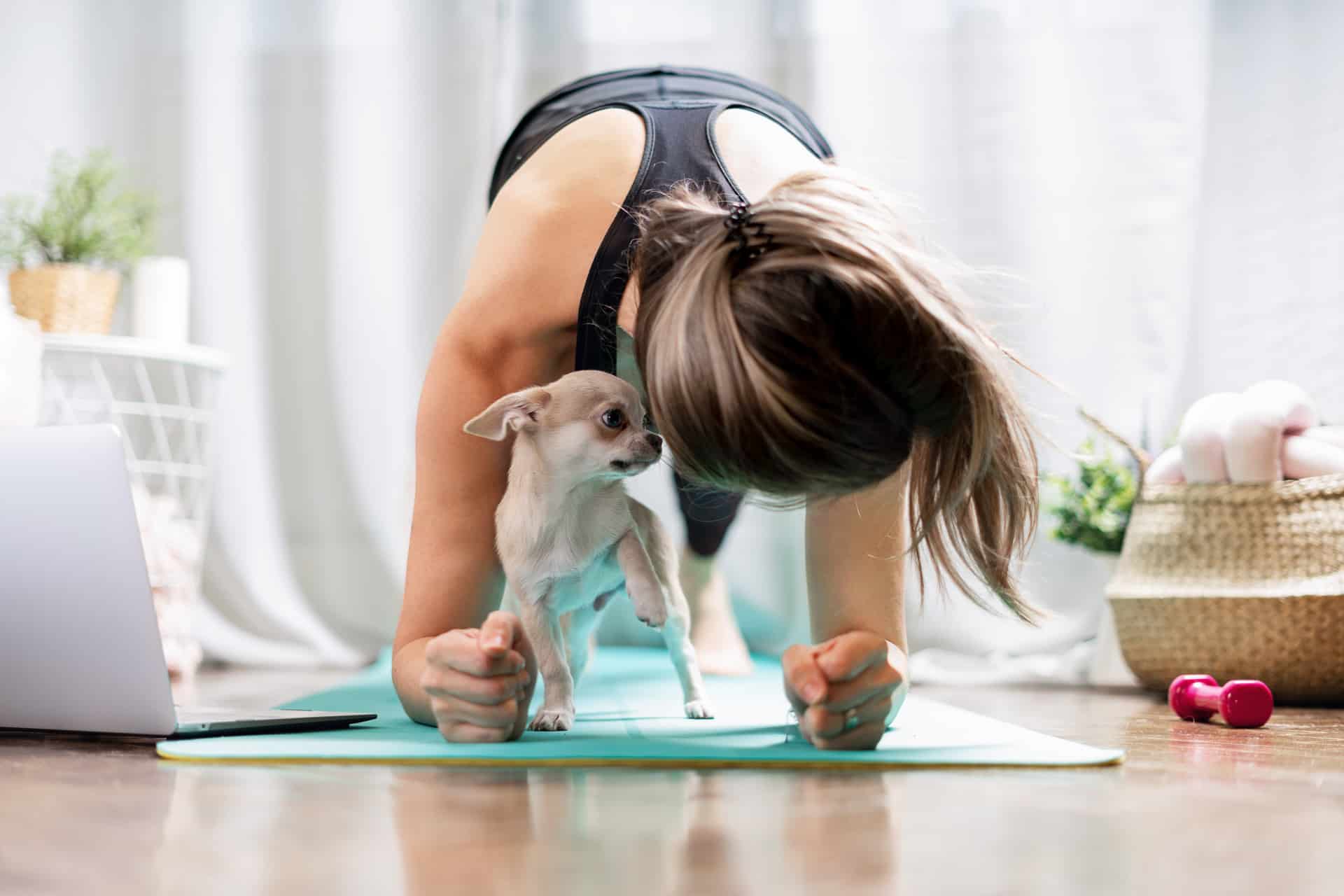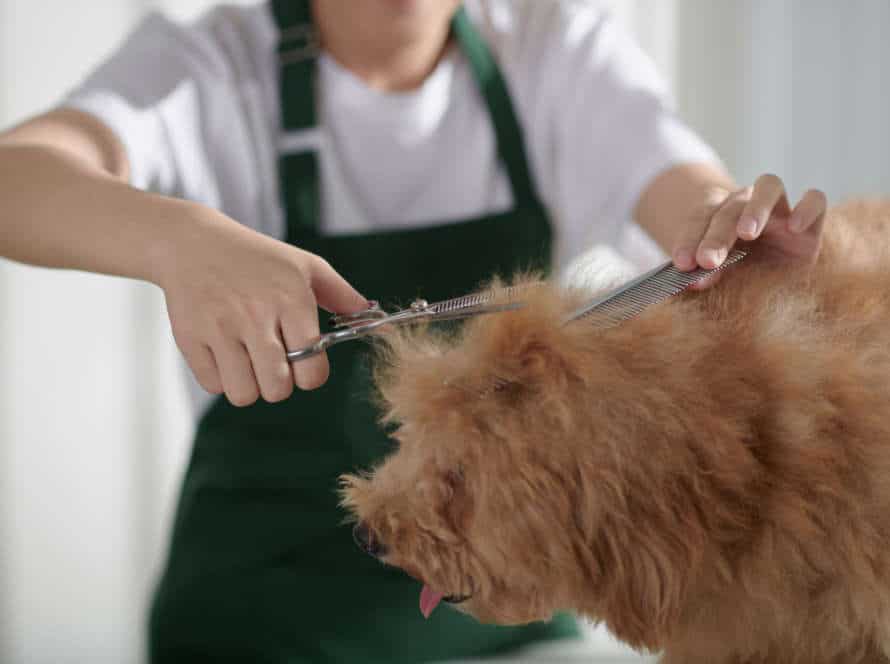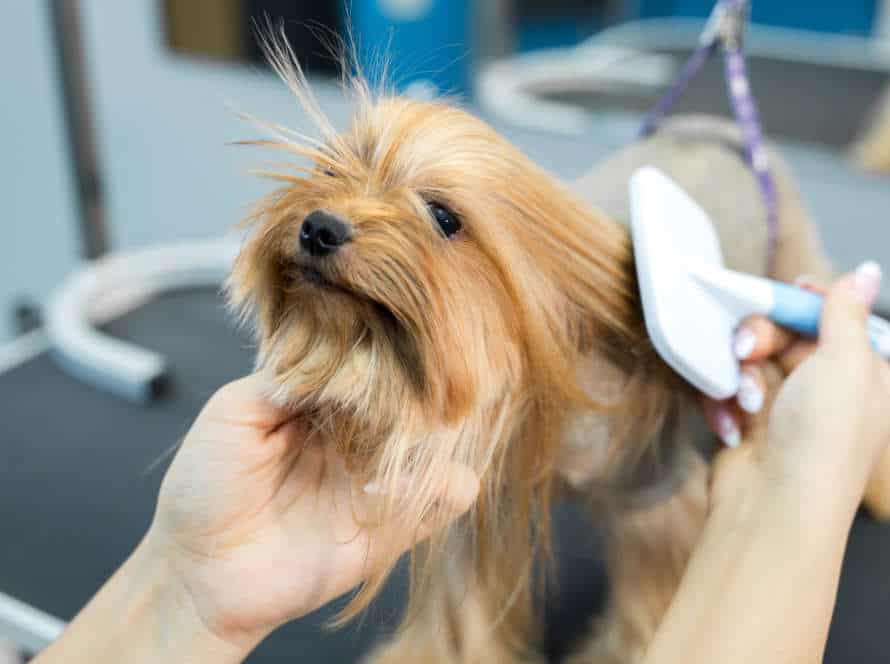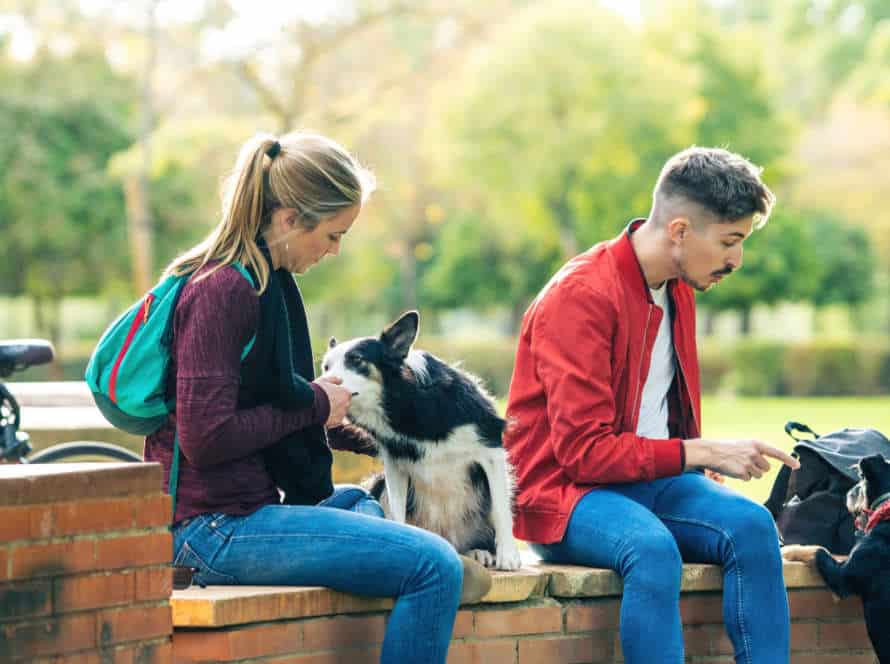Benefits of a Regular Exercise Routine for Your Puppy
A regular exercise routine for your pup is amazing! It keeps them healthy and content. It helps them stay trim and their minds focused. This can reduce destructive behavior and loneliness. Exercise also gives them a sense of serenity as they burn off energy. Here are more perks of having a routine for pup workouts:
Improving Physical Health
Exercise is key for good physical health in your pup. These are the benefits of a healthy exercise routine:
- It prevents obesity, which lessens the risk of illnesses like arthritis, diabetes, and heart disease.
- It helps their metabolism, boosts immunity, aids digestion, and keeps skin and fur healthy.
- When dogs don’t get enough mental and physical stimulation, they may show bad behavior such as digging, barking, chewing, and aggression. Exercise can help by keeping them busy with stimulating activities.
To establish a regular exercise routine, consult your vet. Increase the intensity and duration gradually. Be consistent and make exercise fun for your pup to look forward to.
Maintaining Healthy Mental State
Exercising isn’t only for humans! It’s also essential to maintain a healthy mental state for your pup. A consistent exercise routine will not just improve physical health, but also make your dog happier and better-behaved. Here are the benefits of regular exercising for your pup’s mental state:
- Reduced Anxiety & Depression – Regular exercise increases endorphins, helping with anxiety & depression.
- Better Sleep – Letting your pup expend energy & relieve stress leads to a better sleep routine.
- Enhances Brain Activity – Exercise encourages learning & alertness, promoting brain health.
So, let your furry friend have a run, a hike, or a game of fetch. Pro-tip: Change up the routine for mental & physical stimulation & avoid boredom!
Reducing Behavioral Issues
Regular exercise is essential for puppies. It keeps them fit and healthy, while helping them to release energy, so they stay calm. Here are some benefits:
- It curbs destructive behavior, as it reduces boredom and provides an outlet for their energy.
- It reduces anxiety, by increasing the ‘relaxation hormones’.
- Good sleep is ensured, as tired puppies sleep better.
To create a healthy exercise routine, you need to consider their breed, age, and health. Include activities such as daily walks, playtime, and training sessions.
Pro Tip: Get advice from your vet before starting any exercise routine.
Tailored Exercise Routines for Your Puppy
Exercise is a must for living things, and pups need it even more because of their maturing bodies. It’s super important to get them doing the correct exercise routine so they stay fit and reach their growth potential. There are many ways to make a pup’s exercise routine specific. Let’s see some of these methods!
Factors to Consider Before Establishing an Exercise Routine
Before setting up an exercise routine for your pup, think about some things that will affect their health and happiness. This includes their age, breed, size, and physical fitness.
Pups younger than six months have bones and joints that can be hurt easily, so limit their activity to short, regular walks and gentle play.
Greyhounds and border collies need more exercise than smaller breeds like pugs or shih tzus.
Dogs with health issues like arthritis or being overweight need different exercises, so they don’t get hurt or feel uneasy.
Consult with your vet before creating an exercise routine for your pup. That way, their routine is perfect for their needs and they can live a healthy, active life.
Choosing Age-Appropriate Exercises for Your Puppy
It’s essential to pick age-suitable exercises for your pup. To have a fit, content life, follow these tips!
For puppies under six months, their bones are soft and easily hurt. Avoid high-impact activities. Opt for low-stress activities, like short walks, fetch on a soft surface, or shallow water swimming.
Pups between six and twelve months: their bones are growing more slowly and their muscles become stronger. Moderate activities like jogging, chasing, or hikes of a short distance are okay.
Once your pup reaches one year old, their bones are fully grown. Then, they can do vigorous activities such as running, jumping, long hikes, and agility training.
Check on your puppy’s energy levels, body language, and health when deciding their exercise routine. Make it tailored to them!
Identifying Your Puppy’s Individual Exercise Needs
Every pup has its own exercise needs. These needs depend on breed, age, size and energy level. It’s vital to identify these needs to create a healthy exercise routine. Here are some factors to think about:
- Breed: Exercise requirements differ from breed to breed. For example, a Border Collie needs more exercise than a Basset Hound.
- Age: Puppies under 6 months should do low-impact activities like shorter walks and indoor games.
- Size: Smaller dogs need shorter exercises than bigger ones.
- Energy Level: Some dogs are more active and need more exercise. Observe your pup’s behaviour to figure out their energy level.
Once you know their needs, tailor a routine with things like walking, running, playing games, and training exercises. Begin slowly and gradually increase intensity and duration.
Pro tip: Ask a vet to help you find out your pup’s exercise needs and avoid health risks.
Tips for Establishing a Safe Exercise Routine for Your Puppy
Exercise is a must for a puppy’s physical and mental wellbeing. But, doing it wrong can be risky. Let’s take a look at why exercise is vital for puppies. And, how you can create a healthy and secure exercise routine for them.
Starting Slow and Gradually Increasing Intensity
As a pup parent, figuring out an exercise plan can be intimidating. Go slow and steady for your pup’s safety and well-being.
Here are some tips to get you started:
- Begin with taking lil’ strolls around the block or in a fenced-in area. This helps your pup adjust to the leash.
- Up the distance and duration of your walks as your pup grows more comfortable.
- Include playtime in your routine. Games like fetch and tug-of-war can be great exercise.
- Wait until your pup is fully grown (around 1-2 years, depending on the breed) before doing high-intensity exercise.
- Notice your pup’s signals, like panting and fatigue, and tweak the routine accordingly.
- Also, don’t forget to see your vet regularly and provide water and rest breaks during exercise!
Choosing Safe Exercise Environments and Avoiding Hazards
As a responsible puppy owner, it’s crucial to create a safe exercise plan for your little friend. Here are some top tips:
- Start Slowly: Pups have lots of energy, but don’t let them go too fast. Start with low-impact activities like walking and increase the intensity and length as they get bigger.
- Choose Safe Areas: Avoid places with uneven surfaces, dangerous wildlife, or hazardous materials. Go to parks and dog walking zones instead.
- Watch the Weather: Puppies are sensitive to extreme temperatures, so avoid heat or cold when exercising.
- Use the Right Gear: Make sure your pup has a secure collar, leash, and shoes if needed.
- Regular Check-ups: Organize visits to the vet to keep your pup healthy.
By following these tips, you can give your furry family member the exercise they need, all while staying safe!
Pro Tip: Always monitor your pup while exercising, and adjust accordingly to their individual needs.
Incorporating Play and Mental Stimulation Into Exercise Routine
Incorporate play and mental stimulation into your pup’s exercise routine to keep them healthy, happy and engaged! Here are some tips:
- Puzzle feeders and treat-dispensing balls are great interactive toys to help their minds and promote problem-solving.
- Use fetch, tug-of-war or hide-and-seek to bond and exercise.
- Vary locations and textures, like grass, sand and water.
- Start with short sessions and increase duration and intensity gradually.
- Treats and positive reinforcement will encourage good behavior.
Exercising with play and mental stimulation makes it more fun and beneficial for your pup! Pro tip: Consult a vet for a tailored plan for your pup’s breed, age and health condition.
How Much Exercise your Puppy Needs
Puppy exercise requirements depend on their age and breed. Exercise is not only vital for young puppies, but also adults. Ensuring your pup stays active is essential for their physical and mental health. In this article, we’ll investigate how much exercise your puppy needs and the different ways to guarantee they get it.
Depending on Age and Breed
The exercise a puppy needs depends on age and breed. Puppies have different energy levels and healthcare needs. For example, large breeds like Great Danes and Golden Retrievers need moderate exercise. This is because they are prone to joint problems. Medium breeds like Bulldogs and Beagles have lower exercise needs.
Puppies need 15-20 minutes of playtime and exercise twice a day. Mental activities are better than physical ones. Play fetch, hide-and-seek, and interactive toys.
Monitor your puppy’s exercise. Don’t let them overexert themselves. Overexertion can cause growth issues and damage to muscles and joints. Talk to a vet to determine the right fitness routine for your puppy.
Customizing Your Puppy’s Exercise Routine to Meet Its Needs
Customize your pup’s exercise routine to fit its needs. Think of breed, age, size and health. Exercise helps keep a healthy weight, plus strengthen muscles and burn off energy. But, too much can cause growth and joint issues.
How much does your pup need? Generally, 5 minutes for each month, twice a day. So, a 3-month-old pup needs 15 minutes, and 6-month-old, 30 minutes.
Include different types of exercise in your pup’s routine, like walking, running, playing and training, to keep them mentally stimulated. Monitor their behavior and adjust accordingly. If they seem tired or sore, reduce workout time.
Creating a healthy exercise plan helps ensure your pup’s happiness and good health.
Identifying Signs of Overexertion or Fatigue in Your Puppy
Creating a healthy exercise program for your puppy is essential. Also, be mindful of signs of exhaustion or too much effort. Some common signs include:
- Excessive panting or heavy breathing
- Refusing or slowing down activities they usually enjoy
- Pain or limping
- Muscle tremors or spasms
- Disorientation or uncoordinated movement
- Vomiting or diarrhea
It is important to keep track of your pup’s activities, to avoid them becoming tired or unwell. Too much can lead to a lack of energy and, in some cases, health issues. Pro-tip: Consider the breed, age and size of your puppy when creating their exercise routine.
Creating a Long-term Exercise Plan for Your Puppy
Creating an exercise plan for your puppy is a must! Fun activities are good, but they might not burn enough energy. So, it’s essential to create a long-term plan for your pup. This article will give you the steps to making a healthy exercise routine for your pup. This will help them stay fit and healthy for years!
Tracking and Assessing Your Puppy’s Exercise Progress
Keep track of your pup’s exercise progress. It’s important for their health and energy. Here are some tips to help you:
- Set realistic goals based on age, breed and size.
- Start with 10-15 mins. Gradually increase the time and intensity.
- Make a log – record daily walks and activities.
- Observe their energy, weight and health. Make changes to their routine if needed.
- Pro tip: Exercise not only keeps them healthy, it strengthens your bond too.
Modifying the Routine as Your Puppy Grows or Its Needs Change
Creating a long-term exercise program for your pup is a must for their physical and mental wellness. But, as your pup matures and needs alter, it’s essential to modify their routine. Here are some tips:
- Gradually increase the duration and intensity as they get older, bigger and have more energy.
- Think about their breed and size when planning the routine. Puppies of large/medium breeds with joint issues shouldn’t be overly exercised.
- Shift activities regularly to avoid tedium and reduce the risk of injury.
- Consult a vet to make sure the routine fits their individual needs and health.
By changing the routine, your pup can stay healthy and happy.
Pro tip: Make it fun! Engage in activities both you and your pup love–like playing fetch, a walk or swim. Keep it stimulating with new activities.
Incorporating Exercise into Your Daily Lifestyle with Your Puppy.
It is essential to add exercise to your and your pup’s daily life. Setting up a long-term exercise plan is key. Here’s what to do:
- Learn your pup’s breed and age. Research the amount of exercise they need.
- Pick activities that work for you and your pup, e.g. walking, jogging, hiking, or fetch.
- Create a schedule that fits both your and your pup’s lifestyle, so that your pup gets enough exercise every day.
- Increase the intensity/duration of the routine as your pup grows stronger.
- Stay flexible – adjust the routine as required to fit changes in your pup’s needs or lifestyle.
Frequently Asked Questions
What is the recommended exercise for puppies?
Experts recommend that puppies get 5 minutes of exercise per month of age, twice a day. For example, a 3-month-old puppy should have 15 minutes of exercise, while a 6-month-old should have 30 minutes.
Is it safe to take my puppy for a run?
No, it is not recommended to take your puppy for a run until they are at least 1 year old. Running can put undue stress on a young dog’s joints and bones, which may lead to long-term health problems.
Can I exercise my puppy indoors?
Yes, there are plenty of indoor exercises you can do with your puppy, such as playing fetch, practicing obedience training, or doing puzzle games that provide a mental workout.
How do I know if I am over-exercising my puppy?
Watch for signs of fatigue, such as excessive panting, slowing down, or lying down. If your puppy seems tired, let them rest and recover. Additionally, talk to your vet about your puppy’s specific exercise needs based on their breed and size.
What is the best time of day to exercise my puppy?
The best time of day to exercise your puppy is in the morning or evening when temperatures are cooler. Avoid exercising your puppy during the hottest part of the day, especially in the summer, as they are more susceptible to heatstroke.
Can I take my puppy swimming?
Yes, swimming is a great exercise for puppies since it is low-impact and works several muscle groups. However, always supervise your puppy around water and use a life vest if necessary.







